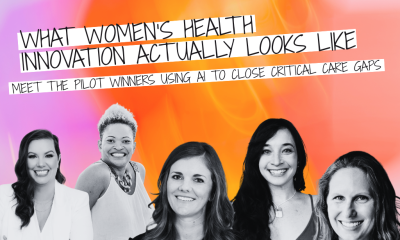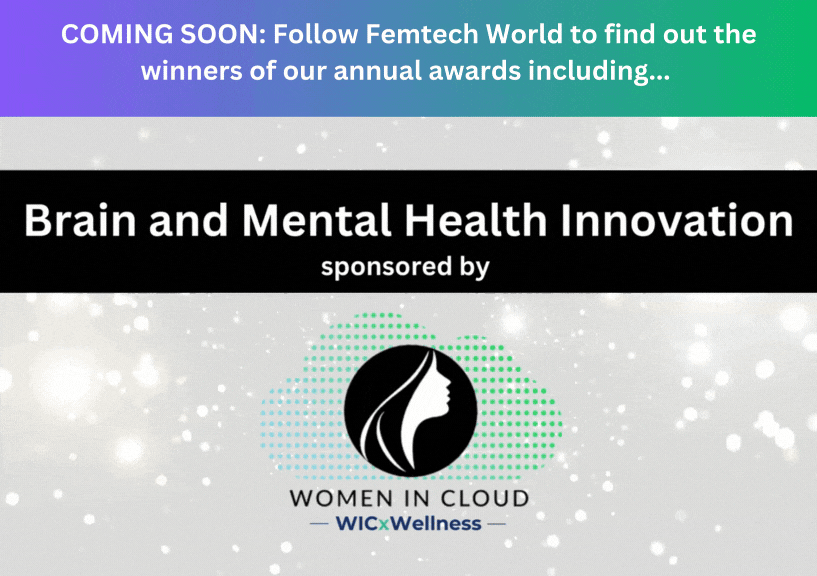Insight
Women’s Health 2.0: The Era of Scale

After two years of uniting the global women’s health ecosystem to drive impact and investment, Women’s Health Week USA has announced the central theme for its 2026 summit: Women’s Health 2.0 — The Era of Scale.
Returning to New York on May 13–14, 2026, the event signals a pivotal moment for the sector. Innovators are no longer just building; they’re scaling.
Investors are increasing activity. Corporates are moving from exploration to strategic commitment. And across the industry, momentum is accelerating at a pace not seen before.
A sector entering its scale phase
This year’s theme reflects a maturing market, one where clinical validation, commercial models, reimbursement pathways and distribution strategies are now centre-stage.
Women’s Health Week USA 2026 will spotlight the organisations translating innovation into real-world adoption.
From the key program themes have just been released this week, attendees can expect:
- A sharper focus on commercialisation and growth, including reimbursement, regulatory clarity and distribution models.
- Deeper investor engagement, with expanded opportunities for targeted 1:1 meetings.
- Two expanded Innovation Showcases, highlighting the next generation of breakthrough founders driving impact at scale.
- A more global attendee base, bringing together more than 600 leaders spanning innovators, investors, corporates, and policy makers.
- New session formats designed to maximise meaningful connection and deal-making.
These developments reflect a broader shift across femtech and women’s health: the move from early innovation to adoption, acceleration and scale.
Shaping the future of women’s health
As one of the sector’s largest global gatherings, Women’s Health Week USA continues its mission to facilitate strategic partnerships that deliver both commercial growth and improved health outcomes for women worldwide.
Over the coming weeks, the organisation will release early speaker announcements, agenda themes and opportunities for innovators, investors and corporates to take part in this year’s programme.
Don’t miss out – register your interest here to receive all the updates as they’re released.
Opinion
How sophrology empowers women to navigate cognitive overload

By Dominique Antiglio, Sophrologist, Wellness Entrepreneur, and Founder of BeSophro
The pace of modern life, especially for women leading in tech and innovation, can feel relentless.
We’re constantly processing, planning, problem-solving, and pushing forward. Yet behind every strategic decision and creative breakthrough often lies a hidden burden: cognitive overload.
This invisible mental strain – the accumulation of tasks, decisions, and emotional responsibilities – is something women frequently carry more heavily.
It’s the unseen work of managing details, anticipating needs, and holding it all together. And when you add the demands of entrepreneurship and leadership, the result is often a sense of chronic overwhelm that no amount of productivity hacks can fix.
I’ve seen this pattern again and again in my work as a Sophrologist. Brilliant, driven women, deeply capable and accomplished, yet quietly running on empty.
What they need isn’t another tool to optimise their schedule; it’s a way to reclaim their mental space. That’s where Sophrology comes in.
A Modern Method for a Modern Mind
Sophrology is a structured, science-informed mind-body method that combines relaxation, breathing, gentle movement, visualisation, and meditation.
Created in the 1960s by neuropsychiatrist Alfonso Caycedo – who I was fortunate to train under – it has long been used across Europe to manage stress, improve focus, support sleep, and build resilience, often prescribed alongside traditional medical solutions and reimbursed by health insurance.
Unlike traditional meditation, Sophrology is active and practical.
It doesn’t ask you to switch off your thoughts or retreat from the world, but rather to cultivate presence and balance within it.
By using simple physical and mental exercises, you learn to regulate your nervous system, release tension, and quiet the constant internal dialogue that feeds stress and distraction.
For women in fast-moving, cognitively demanding industries like tech, Sophrology offers something rare: a sustainable mental toolkit for staying centred, creative, and clear-headed amid the noise.
Releasing the Mental Load

Dominique Antiglio
Sophrology helps calm the mind and release physical and psychological tension. Through conscious breathing and guided awareness, it clears the mental clutter that builds up from multitasking and decision fatigue.
A few minutes of practice can shift your state profoundly.
By anchoring your attention in the body – feeling your breath, relaxing your shoulders, softening the jaw – you interrupt the stress response and restore a sense of clarity.
Visualisation then helps you to let go of unnecessary worries, reconnect with priorities, and approach challenges with renewed focus.
When practiced regularly, this process builds mental resilience – not by forcing yourself to do more, but by learning how to reset efficiently and recover quickly.
Self-Awareness as a Strategic Advantage
In entrepreneurship, self-awareness is often framed as emotional intelligence or leadership maturity.
In Sophrology, it’s also physiological, tuning into the body’s signals before they escalate into burnout.
Through practice, you notice signs of overload: tension in the neck, shallow breathing, fatigue, restlessness, or difficulty concentrating.
These are not inconveniences to be pushed through, they are data points. Information from your body that something needs to shift.
By responding early, taking a few moments to breathe deeply, stretch, or visualise calm, you can prevent stress from becoming chronic.
This kind of embodied self-awareness is a powerful leadership asset.
It supports better decision-making, emotional regulation, and ultimately, more sustainable performance.
From Overwhelm to Empowerment
One of the most profound effects of Sophrology is its ability to reframe mindset.
It teaches self-compassion – the recognition that your worth is not defined by productivity or output.
By reconnecting with your personal values and intuition, you gain clarity about where to focus your energy.
You start saying yes only to what aligns with your goals and no to what doesn’t serve your wellbeing or mission. You delegate more easily, prioritise more intelligently, and stop chasing the illusion of doing it all.
This is especially transformative for women in leadership, where the pressure to perform and prove oneself remains high.
Sophrology empowers you to lead from a place of grounded confidence – to remember that you are not your to-do list.
Real, Measurable Benefits
Over time, consistently practicing the modalities of Sophrology brings tangible, science-backed benefits that directly support the entrepreneurial mindset:
- Improved sleep quality: Restorative sleep fuels sharper thinking and better emotional regulation.
- Enhanced focus and concentration: A calm mind processes complex information more effectively.
- Greater emotional balance: You respond to challenges rather than react to them.
- Sustained energy: By reducing internal tension, energy is used more efficiently.
- Expanded creativity and clarity: With less noise in the mind, insights arise more naturally.
These benefits don’t just improve wellbeing — they enhance leadership capacity.
A centred, self-aware founder or executive is not only more productive, but also more visionary and empathetic.
Reclaiming Your Inner Bandwidth
In tech, we talk often about bandwidth; the capacity of systems to handle information efficiently. But human bandwidth matters too.
Without space to think, reflect, and rest, innovation stalls and burnout takes over.
Sophrology helps women reclaim that inner bandwidth, decluttering the mind, restoring focus, and building the resilience needed to thrive in high-pressure environments.
It’s not about doing less; it’s about showing up differently – grounded, present, and fully yourself.
Because the truth is, when you reclaim your mental space, you don’t just feel better – you lead better.
Try It Yourself: A 3-Minute Sophrology Reset
If you’re feeling mentally overloaded, try this short exercise to calm your mind and refocus your energy:
- Find a comfortable position sitting. Close your eyes.
- Scan your body from head to toe. Notice the presence of your body and your breath. Any areas of tension: Your neck? Shoulders? As you exhale, encourage releasing tightness from those areas.
- After the body scan, stand up with your arms alongside your body and clench your fists. Now inhale, hold your breath and move your shoulders up towards your ears and back down a few times until you need to exhale. Exhale through your mouth and release your fingers, hands, arms and shoulders fully, visualising the mental load leaving your body. Repeat twice, observing your sensations.
- Now sit back and relax in your chair and take a moment to simply feel the sensations in your body: warmth, relaxation, or anything that shows up – even tension or worries. Simply make a mental note of it without judgement.
- Before opening your eyes, take a moment to welcome a positive word of your choice – such as “calm”, “confidence”, “joy” or “energy”.
- Open your eyes and notice how you feel; lighter, more centred, and ready to continue with renewed focus.
About the Author
Dominique Antiglio is a world-leading sophrologist, best-selling author, and founder of BeSophro, an online sophrology platform making this transformative method accessible to English-speaking audiences worldwide.
Her clients include Silicon Valley Founders, top athletes, and leading corporate organisations.
Insight
Teeth of babies of stressed mothers come out earlier, study suggests

Maternal stress hormones in pregnancy are linked to earlier tooth eruption, with infants showing about four more teeth on average by six months, new research has revealed.
Researchers studied 142 mothers from socioeconomically disadvantaged backgrounds who were pregnant between 2017 and 2022.
They measured hormone levels in saliva during late pregnancy, including cortisol, sex hormones and thyroid hormones.
University of Rochester researchers then tracked when babies’ milk teeth emerged through regular dental checks at one, two, four, six, 12, 18 and 24 months after birth.
Women with the highest cortisol levels had babies with an average of four more teeth at six months compared with those with the lowest levels.
By six months, 15 per cent of infants had between one and six erupted teeth, while 97.5 per cent had between one and 12 teeth by their first birthday.
The study included mothers from varied backgrounds, with 52 per cent of children identified as African-American, 60 per cent of mothers having a high school education or lower, and 53 per cent employed.
While 36.6 per cent of women had depression or anxiety diagnoses during pregnancy, this was not directly linked to hormone levels or tooth eruption timing.
Dr Ying Meng, associate professor at the School of Nursing, said: “High maternal cortisol during late pregnancy may alter foetal growth and mineral metabolism, including the regulation of levels of calcium and vitamin D, both essential for mineralisation of bone and teeth.
“Cortisol is also known to influence the activity of so-called osteoblast and osteoclast cells, responsible for building up, shaping and remodelling bone.”
The findings suggest prenatal stress accelerates biological ageing in children.
Premature tooth eruption could serve as an early warning sign of compromised oral development and overall health linked to socioeconomic deprivation and prenatal stress.
Researchers also found weaker associations between maternal sex hormones, including oestradiol and testosterone, and greater tooth numbers at 12 months.
Similar links appeared between progesterone and testosterone levels and tooth count at 24 months, and between the thyroid hormone triiodothyronine and teeth at 18 and 24 months.
Meng said: “These results are further evidence that prenatal stress can speed up biological ageing in children.
“Premature eruption of teeth could thus serve as an early warning sign of an infant’s compromised oral development and overall health, associated with socioeconomic deprivation and prenatal stress.
“We still have key questions that need answering, for example which maternal hormones or downstream developmental pathways drive the change in the timing of tooth eruption, what the exact relationship is between accelerated eruption of teeth and biological ageing and development, and what such speeding up says about a child’s general health.”
Insight
IVF linked to higher mutations than natural conception in mice

IVF-conceived mice show about 30 per cent more DNA mutations than naturally conceived pups, researchers report, though they caution the findings do not directly translate to humans.
-

 Hormonal health4 weeks ago
Hormonal health4 weeks agoDozens of women report suffering painful burns after using Always sanitary towels
-

 Events4 weeks ago
Events4 weeks agoCutting through the noise in femtech – key takeaways from Women’s Health Week 2025
-

 News3 weeks ago
News3 weeks agoAI embryo selection tool wins European approval
-

 News1 week ago
News1 week agoOpinion: Not ‘just stress’ – How hormonal changes affect women’s brain function
-

 News3 weeks ago
News3 weeks agoTestosterone patch shows promise for menopausal women
-

 Features3 weeks ago
Features3 weeks agoFrom SEO to GEO: How women’s health brands can get found in the age of AI
-

 News2 weeks ago
News2 weeks agoTop 7 drug-free solutions for managing PMS and PMDD in in 2025
-

 News3 weeks ago
News3 weeks agoFDA approves new menopause drug to treat hot flashes and night sweats





























